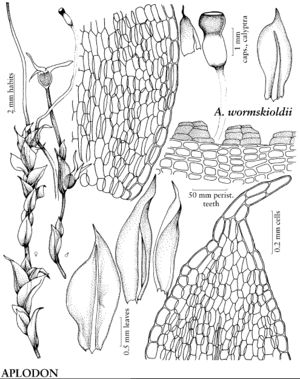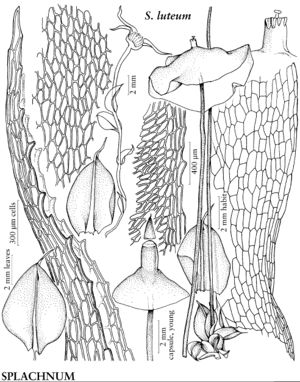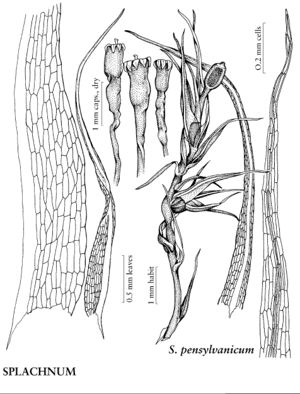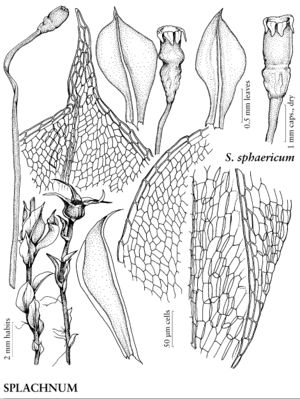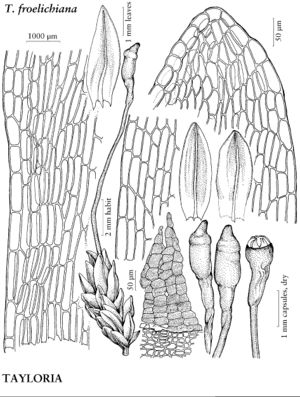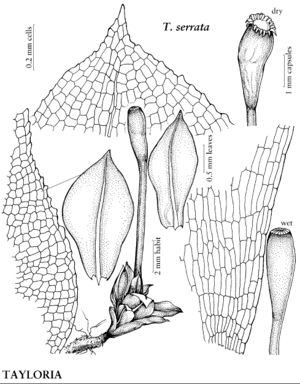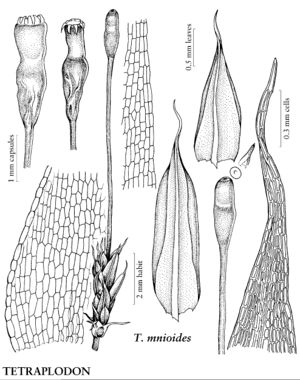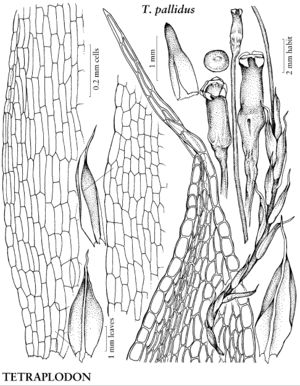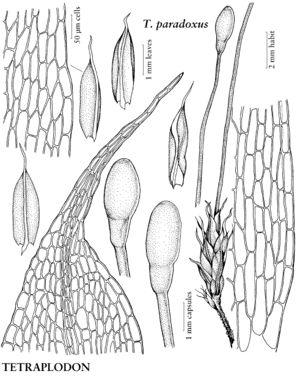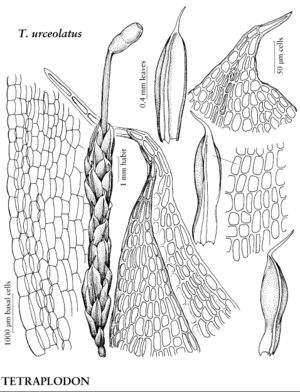Plants small to medium-sized, green, yellowish, or sometimes brownish, acrocarpous. Stems 2-fid by subfloral innovations; axillary hairs common, minute, claviform. Stem-leaves soft, homogeneous along stem or larger and crowded at stem apices, ovatelanceolate, oblong, or spatulate, broad; margins entire to dentate, sometimes bordered; costa single, strong, usually ending before apex; laminal cells rhomboidal, large; basal-cells oblong; distal cells oblong or oblong-hexagonal. Perichaetia with leaves similar, often larger. Seta erect, usually elongate, thin or thick. Capsule erect, exserted, symmetric or slightly curved, neck elongate, or hypophysis wide and inflated or long and narrow, proximal to urn; columella sometimes exserted; stomata many, guard cells 2; annulus usually absent; operculum convex to conic; peristome usually present, single (double in Splachnum); exostome teeth 8–12 or 16, rarely 2-fid, approximate in groups of 2 and 4, densely and finely papillose. Calyptra mitrate or rarely cucullate, smooth, sometimes hairy.
Distribution
Nearly worldwide, tropical to subpolar regions
Discussion
Genera 6, species 73 (5 genera, 20 species in the flora).
Almost half the species of Splachnaceae possess three noteworthy ecological features. First, their gametophytes are coprophilous, growing on feces, occasionally old bones, and other animal matter. Second, their spores are commonly small and sticky, making them suitable for insect dispersal. Third, the sporophytes of all entomophilous Splachnaceae examined to date produce complex, species-specific odors that are thought to promote the attraction of flies (order Diptera).
Although the leaves of Splachnaceae are soft textured and similar in shape to those of Funariaceae, recent phylogenetic studies suggest that Splachnaceae are more closely related to Meesiaceae than to Funariales as previously proposed. Like many species of Meesiaceae, most Splachnaceae grow in moist habitats such as peatlands in temperate and boreal forests. Splachnaceae differs from Meesiaceae in the structure of the capsule, which in Splachnaceae is erect with a mitrate calyptra, whereas in Meesiaceae the capsule is curved with a cucullate calyptra (B. Goffinet et al. 2004).
Selected References
None.
Lower Taxa
Illustrations
Key
| 1 | Capsules cleistocarpous; plants coprophilous; hypophysis present or absent | > 2 |
| 1 | Capsules not cleistocarpous; plants coprophilous or not; hypophysis clearly differentiated | > 3 |
| 2 | Peristome absent; hypophysis absent; capsules dark red. | Voitia |
| 2 | Peristome present; hypophysis present; capsules yellowish. | Tetraplodon |
| 3 | Hypophysis short to elongate, narrower than to somewhat wider than urn; calyptrae constricted at base or not; plants coprophilous or not | > 4 |
| 3 | Hypophysis elongate, not to much wider than urn; calyptrae not constricted beyond base; plants coprophilous or on old bones | > 5 |
| 4 | Hypophysis narrower than or occasionally as wide as urn, same color as urn; exostome teeth 8 or 16; calyptrae constricted at base; plants not coprophilous. | Tayloria |
| 4 | Hypophysis barely wider than urn, same color or darker than urn; exostome teeth 16; calyptrae not constricted beyond base; plants coprophilous or on old bones. | Tetraplodon |
| 5 | Hypophysis globose to turbinate, sometimes umbrelliform, greatly differentiated from urn in size and color; peristome double; exostome teeth not rudimentary. | Splachnum |
| 5 | Hypophysis rounded, not or slightly wider than urn, similar to urn in size and color; peristome single; exostome teeth rudimentary. | Aplodon |
